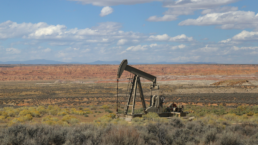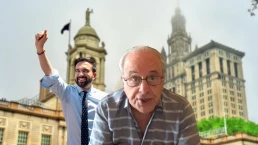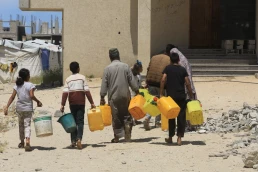Federal data reveal the plan does little to stop drilling and may push future development into Indigenous communities.
By Mark Armao, Grist
In November, under a high sky in northwestern New Mexico, U.S. Interior Secretary Deb Haaland stepped proudly to the podium against a backdrop of sandstone bluffs. She was flanked by Pueblo leaders who had gathered that day to commemorate the recently announced protections for Chaco Culture National Historical Park, where ancestral Puebloans created a sprawling center of trade and culture from the tawny-colored rock more than a thousand years ago.
“It is not difficult to imagine centuries ago children running around the open space, people moving in and out of doorways, bringing in their harvest or preparing food for seasons to come,” Haaland said of the Chaco complex, where multi-story ruins rise from the floor of a wide canyon. “We’re here because President Biden and I heard your voices and are taking important steps to take care of our land, our air, and our water.”

Haaland’s speech came days after the Department of Interior announced it was considering a 20-year moratorium on new federal oil and gas leasing within a roughly 10-mile radius around the park, an approximately 950,000-acre area referred to as the buffer zone. Along with shielding the site from fracking facilities that have encroached on the area in recent years, the action was touted as part of the Biden administration’s larger effort to curb greenhouse-gas emissions while promoting environmental justice and tribal consultation.
But a review of federal leasing data by Grist suggests that the protections are a superficial fix, as they will likely do little to impede the recent influx of oil and gas development. Although the federal government plans to prevent new leasing on hundreds of thousands of acres within the Chaco buffer zone, oil and gas companies with existing leases can continue to extract minerals within its boundaries.
Recent Posts
“Arrest Now, Ask Questions Later”: Why Did L.A. ICE Agents Arrest and Jail U.S. Citizen Andrea Velez?
July 3, 2025
Take Action Now “They didn’t have vests that said ICE or anything. Their cars didn’t have license plates. … Just because of the color of our…
Trump’s Big, Beautiful Bill Is Naked Class War
July 3, 2025
Take Action Now Trump’s “Big, Beautiful Bill” trades tax cuts on millionaires for the dissolution of society.By Hamilton Nolan, In These Times…
Mayor Mamdani’s First Day, A Zero Hour Conversation With Richard Wolff
July 2, 2025
Take Action Now If elected, what would Mayor Mamdani do on his first day in City Hall? How would a democratic socialist govern as a big-city mayor?……
The U.S. Is Funding A Bloodbath At Gaza Aid Centers
July 2, 2025
Take Action Now The admin just gave $30M to GHF, the organization at the center of charges that Israel is weaponizing assistance and shooting at…




